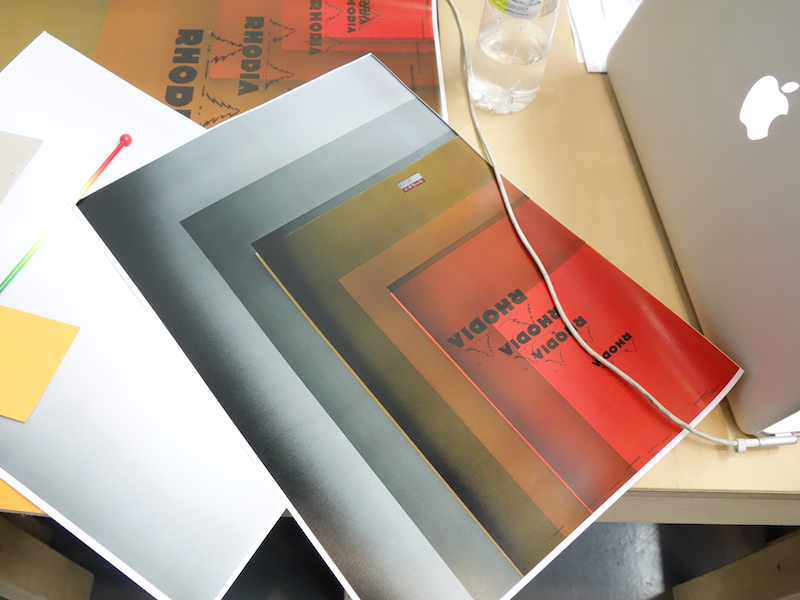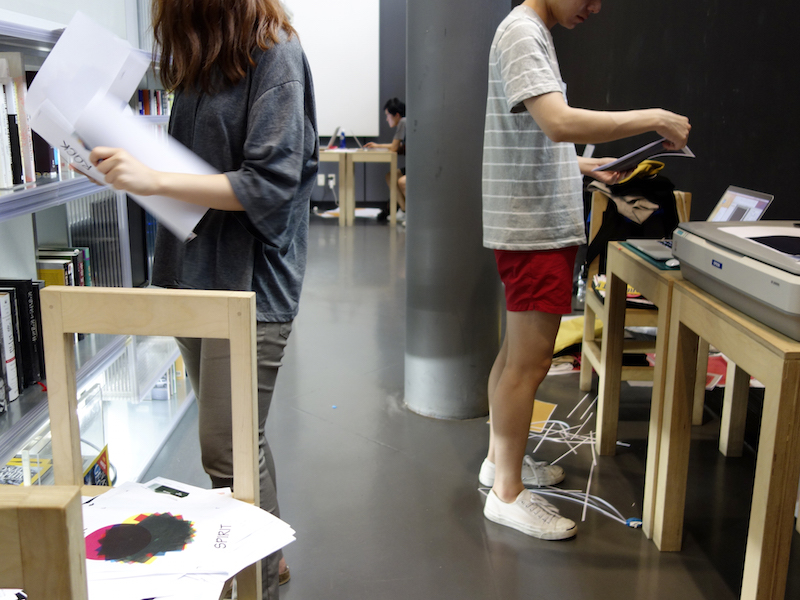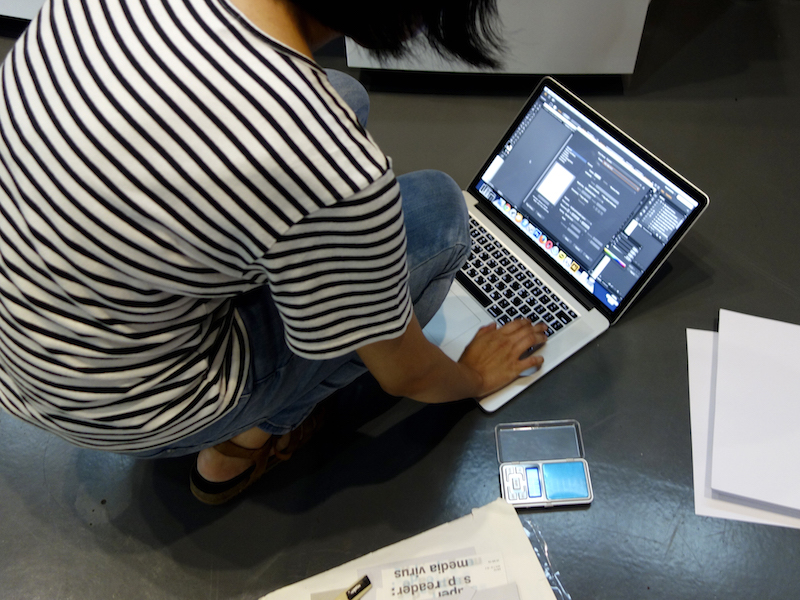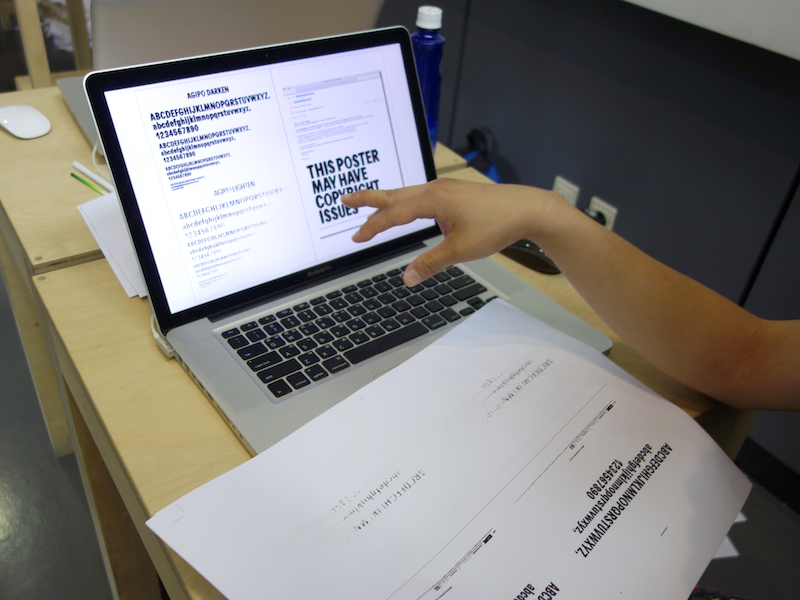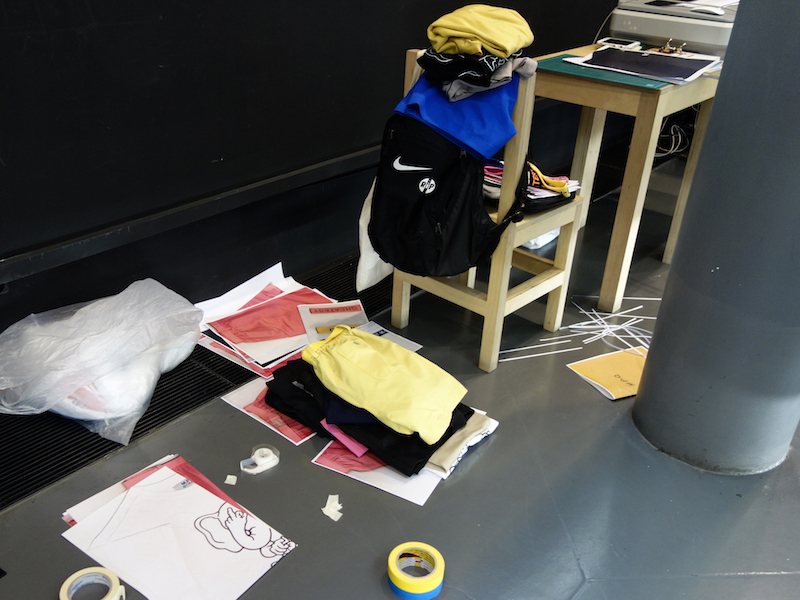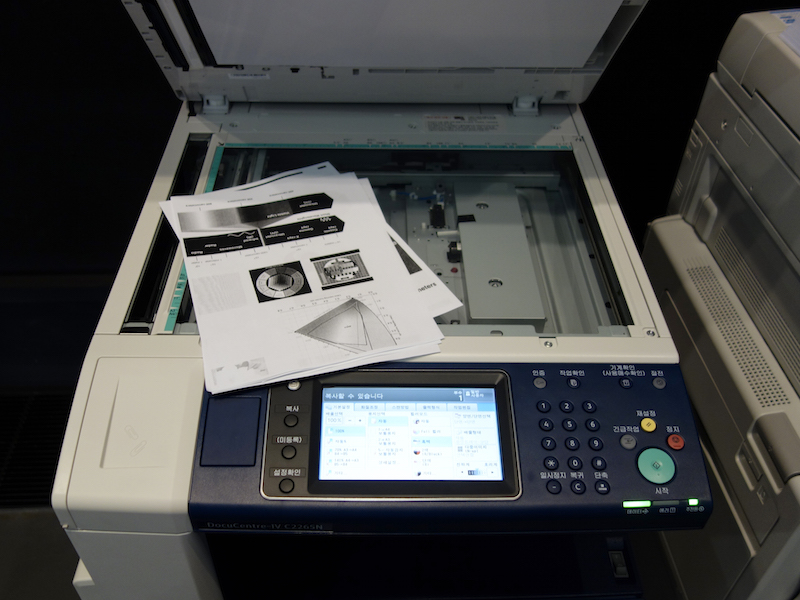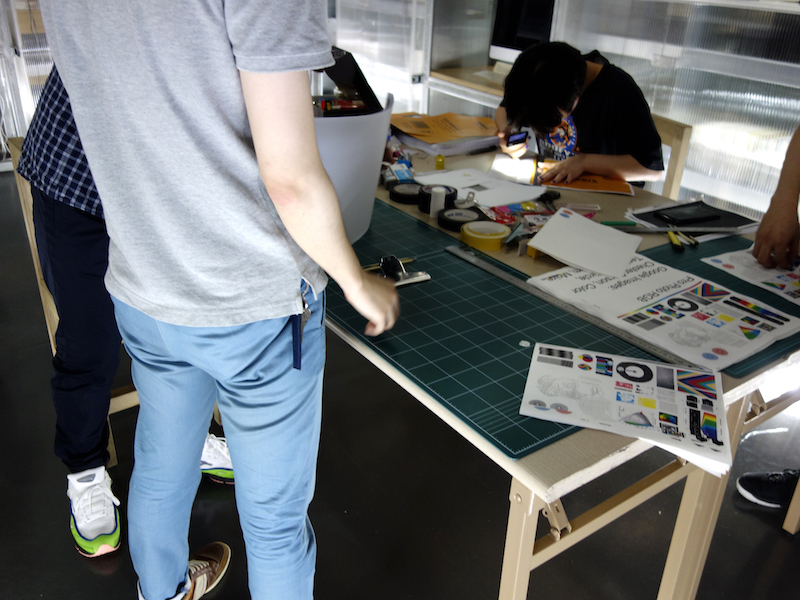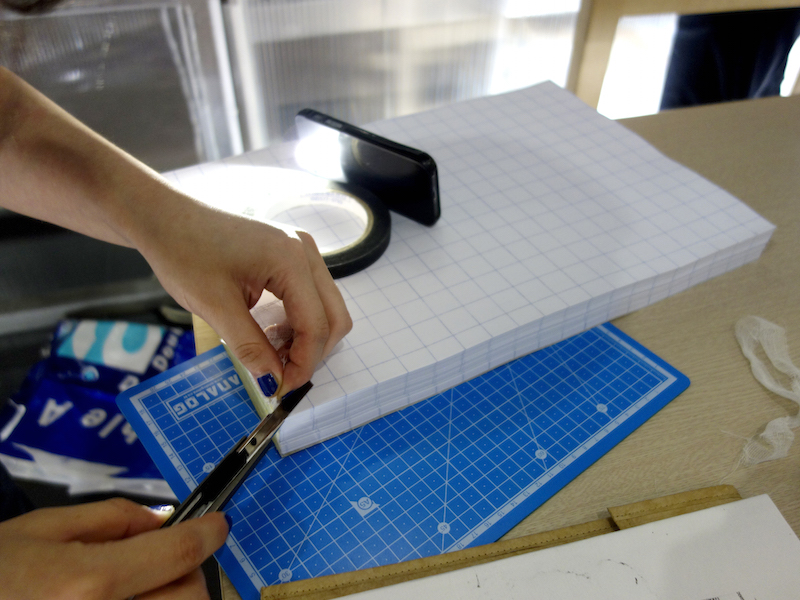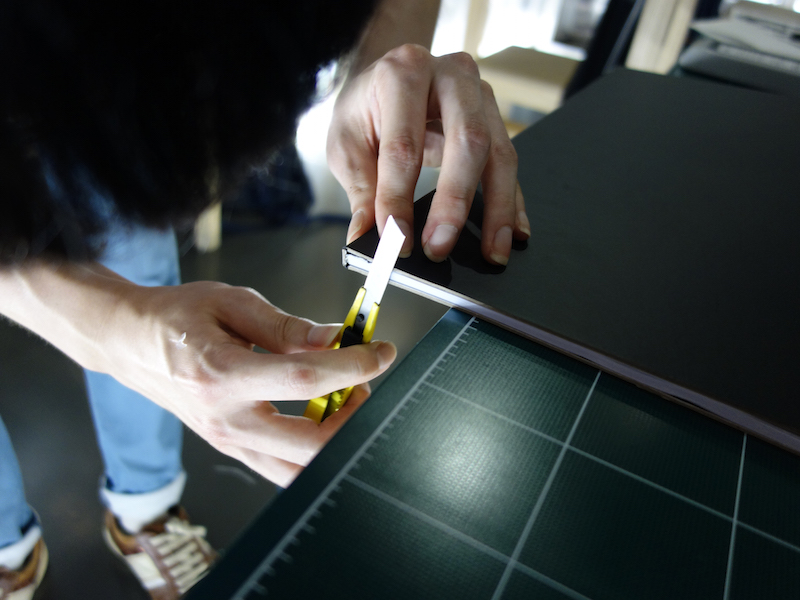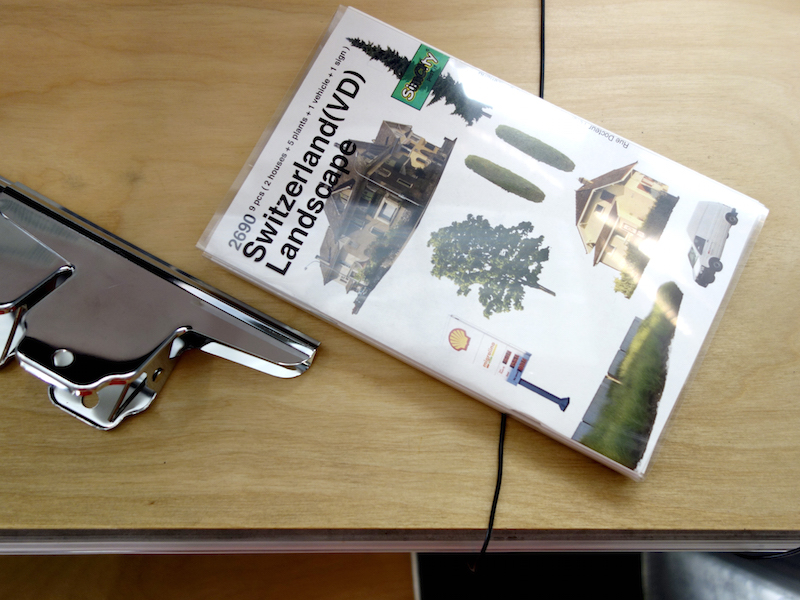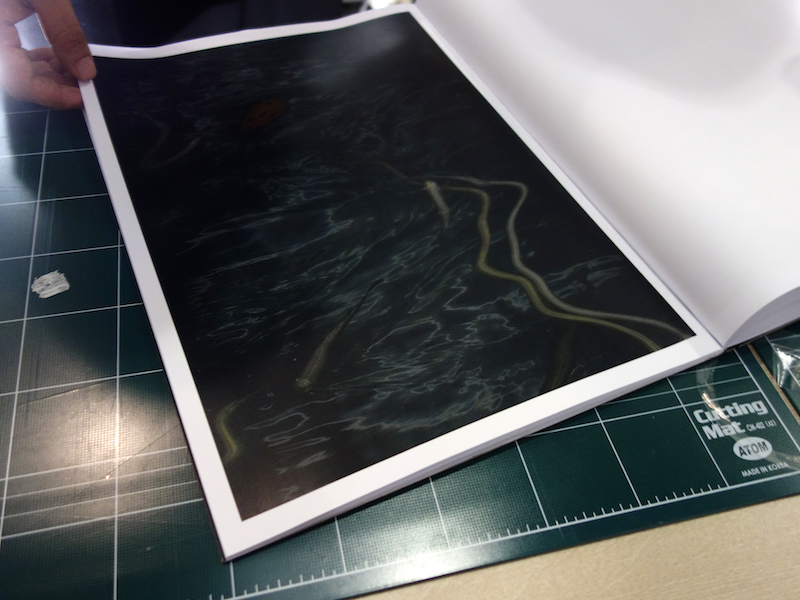제록스 프로젝트 Xerox Project
Organized by Nam June Paik Art Center
Date: 4–26 July 2015
Project Manager: Kyung Yong Lim (mediabus)
Design: Haeok Shin, Donghyeok Shin
Xerox Workshop
Nam June Paik Art Center
Date: 4–21 July 2015
Instructors: Haeok Shin, Donghyeok Shin
Participants: Youngchan Kwon, Eunhee Kim, Jaecheol Park, Jongmin Ahn, Jieun Yang, Hansol Oh, Jisoo Yoon, Yoonjae Lee, Jae Hwan Lee, Hyun-jung Lee, Eunji Jo
Sponsored by FujI Xerox Korea
Xerox Display
Nam June Paik Library
Date: 14–26 July 2015
Curator: Kyung Yong Lim
Co-curated by Sang Ae Park
Technician: Ki Jun Lee
Librarian: Hye Kyu Rhee
Coordinators: Sungwoo Bae, Min Chun
The Xerox Project intends to seek what role publishing and printing technologies have played in art activities (especially in the particular context of Nam June Paik Art Center), what context such technologies have brought about, and whether they have continued or discontinued. This project is consisted of four parts which are meant to explore the above matters: [1] the chronological table to show the overall history of printing technologies; [2] the diagram of the relationship among certain events, art movements and technologies; [3] the display of around 60 relevant books; [4] the publication workshop conducted with 11 participants for 4 days.
Since Kynaston McShine curated Information, an exhibition held at MoMA in 1970, art and media have forged a close relationship and influenced each other. While Information dealt with the relationship between art and newly emerged media (television, radio, fax, magazine, etc.) back then, numerous artists nowadays are interested in how digital media works in the present social conditions. As such, change or development of technologies fundamentally affects artists’ activities or sometimes becomes art works by itself. However, for individual technology to be qualified as independent media, collective movements and contexts dedicated to such technology are required.
If so, does the Xerox technology have the qualifications for independent media? In this project, Xerox machines mean more than just devices that copy or print documents. They became popular among the general public in the 1960s, and began to gain their own status within counter-cultural, D.I.Y. and Fluxus movements that expanded their fields quickly at that time. Actually, it didn’t have to be Xerox. Mimeography and rotary press played their roles in movements in the 1960s as well. The scopes and types of printed matters created by artists were very diverse, but their premises were simple. If you have information or ideas worth sharing, you print it, make copies as many as you need, and distribute them. This became a new method to create and disseminate information, which were previously done through the then-widely used book-technology.
Fluxus artists didn’t claim copyrights for their art works (the story is different today, though). This demonstrates that those artists and how Xerox machines produce documents have similarities in terms of their basic attitudes. Copying machines generate copies in large quantities whose quality is not much different from the originals. Some people even prefer the unique sentiment exuded by copies to the original (the values of the original and the copied are reversed). Small Press or Independent Publishing create a huge amount of printed materials these days, and their activities have become possible partly thanks to Xerox. Each of the artists and students, who participated in the workshop, produced their works by employing various features embedded in Xerox machines. We are living in a world where all information is obtained and consumed in a digital form, and Xerox is just used as a tool to produce documents. Many technicians are endeavoring to eliminate the gap, time difference and errors between receivers and senders of information. However, sending and receiving information through digital devices take a very small part in our cognitive system. Devices are messages in themselves today, and possibilities to access a territory where such devices cannot approach are becoming more and more distant.
The participants’ works expose the blind spot of the digital area as it is. We feel pleasure rather than embarrassment, when we succeed to transform redundant information and the process to handle such information into a physical form. The collective value behind the D.I.Y. movement can be enhanced when such pleasure is shared. So, we can see collectivity is formed when sharing what we create, and the workshop served as an opportunity to verify that.
It is not to say Xerox machines themselves are the condition for collectivity. However, the Xerox technology can print out the blueprint to discover blind spots in the digital culture that surround us. We could get clues to access to a black box when we actively interpreted and analyzed functions of copying machines with the aim of creating something, not when we felt nostalgic for old technologies. I would like to thank all the people who worked hard for this project.
제록스 프로젝트
주관: 백남준아트센터
기간: 2015.7.4–26
기획: 임경용(미디어 버스)
디자인: 신해옥, 신동혁
제록스 워크숍
백남준아트센터
2015.7.4–21
강사: 신해옥, 신동혁
참가자: 권영찬, 김은희, 박재철, 안종민, 양지은, 오한솔, 윤지수, 이윤재, 이재환, 이현정, 조은지
협찬: 한국후지제록스(주)
제록스 디스플레이
백남준 라이브러리
2015.7.14–26
큐레이터: 임경용
협력: 박상애
기술: 이기준
사서: 이혜규
진행: 배성우, 전수민
제록스 프로젝트는 예술 활동(특히 백남준 아트센터의 특정한 맥락)에서 출판 인쇄 테크놀로지가 어떤 역할을 했는지, 그러한 테크놀로지가 지금 어떤 맥락을 형성하며 지속되거나 소멸되었는지 살펴보기 위해 기획되었다. 이를 위해 크게 4가지 장치를 마련했는데, [1] 인쇄 테크놀로지 역사를 개괄한 연표 작업, [2] 특정적 사건과 예술 운동, 테크놀로지의 관계를 그린 다이어그램, [3] 관련 도서 60여종을 보여주는 디스플레이, [4] 11명의 참여자와 함께 4일 동안 진행한 워크숍이 그것이다.
1970년 뉴욕현대미술관에서 키네스톤 맥샤인이 «인포메이션» 전시를 기획한 이후 예술과 미디어는 밀접한 관계를 맺으며 서로 영향을 미쳐왔다. «인포메이션»이 당시 새롭게 등장한 미디어(텔레비전이나 라디오, 팩스, 잡지 등)와 예술 사이의 관계를 다뤘다면, 지금 상당수 예술가들은 디지털 미디어가 지금 사회적 조건 안에서 어떻게 작동하고 있는지 관심을 가지고 있다. 이처럼 테크놀로지의 변화나 발전은 예술가 작업에 근본적인 영향을 미치거나 작업 그 자체가 되기도 하였지만, 개별 테크놀로지가 독립된 미디어로서 언급할 만한 가치를 가지기 위해서는 그러한 테크놀로지를 전용하는 집단적인 움직임과 맥락을 필요로 했다.
그렇다면 제록스 테크놀로지가 독립된 미디어로서 가치를 가지고 있는 것일까? 이번 프로젝트에서 제록스는 문서를 복사하거나 출력하는 기계 이상의 의미를 가지는데, 60년대부터 대중에게 본격적으로 공개된 이 기계는 당시 빠르게 세를 확장했던 카운터 컬쳐나 D.I.Y., 플럭서스 등과 같은 움직임 안에서 자신의 고유한 위치를 획득하기 시작했다. 사실 이것이 꼭 제록스일 필요는 없었다. 등사나 윤전 인쇄와 같은 기술도 60년대 발현된 운동 안에서 자신의 역할을 가지고 있었다. 예술가가 만드는 인쇄물의 범위와 종류는 매우 다양했지만 기본적인 전제는 단순하다. 공유할 만한 정보나 생각이 있다면 그것을 출력하고 필요한 숫자만큼 제작해서 배포하는 것이다. 그것은 그 당시 익숙했던 책-테크놀로지와는 또 다른 방식으로 정보를 생산하고 유통하는 방법이 되었다.
플럭서스 작가들이 작품에 대한 저작권을 주장하지 않았다는 사실은 (물론 지금은 사정이 다르지만)제록스 복사기가 문서를 생산하는 방식과 이들 사이에 태도적인 유사성을 공유하고 있음을 보여준다. 복사기는 원본과 질적으로 크게 다르지 않은 복사본을 대량으로 양산하는데, 심지어 어떤 이들은 복사본이 가진 독특한 감수성을 선호하기도 한다(원본과 복사본의 가치가 역전되는 상황이 벌어지는 것이다). 지금 소규모 출판이나 독립출판의 영역에서 많은 인쇄물들이 만들어지고 있는데 그러한 활동을 가능하게 한 테크놀로지 가운데 하나로 제록스를 꼽을 수도 있다.
이번 워크숍에 참여한 작가나 학생들은 제록스에 잠재되어 있는 여러가지 조건을 활용해 각자 작업물을 만들어 내었다. 지금 우리는 모든 정보를 디지털화된 형식으로 수용하고 소비하는 시대를 살고 있으며, 제록스는 문서를 생산하는 도구로만 소비되고 있을 뿐이다. 거기다가 정보의 발신자와 수신자 사이의 간극과 시차, 오류를 없애기 위해 많은 기술자들이 지금도 노력을 하고 있다. 하지만 우리의 인식 체계 안에서 디지털 장비에 의존해 정보를 보내고 받아들이는 영역은 매우 협소한 부분을 차지하고 있을 뿐이다. 우리는 장치가 메시지 자체가 되는 시대를 살고 있고 그 장치가 받아들이지 못하는 영역에 접근할 수 있는 방법은 점점 더 멀어지고 있다.
이번 워크숍을 통해 만들어진 작업은 디지털 영역의 사각 지대를 그대로 노출한다. 무용한 정보와 그 정보를 다루는 과정을 물리적으로 구현했을 때 우리는 당혹감보다는 쾌감을 느끼게 된다. 사실 D.I.Y. 운동 저변에 깔려 있는 집단적 가치는 그러한 쾌감을 공유했을 때 증폭될 수 있다. 이처럼 자신이 만든 것을 공유하는 과정에서 형성되는 집단성을 생각해볼 수 있고 이번 워크숍은 그것을 확인하는 계기가 되었다.
물론 제록스 복사기 자체가 집단성을 위한 조건이 된다고 말하는 것은 아니다. 그러나 제록스 테크놀로지는 우리를 둘러싸고 있는 디지털 문화의 사각 지대를 발굴하기 위한 청사진을 출력할 수 있다. 예전 기술에 대한 노스탤지어가 아니라 무언가를 만들기 위해 복사기의 기능을 적극적으로 해석하고 분석했을 때, 우리는 블랙박스에 접근할 수 있는 단서를 얻을 수 있었다. 이번 프로젝트를 위해 애써주신 모든 분들께 감사드린다.

